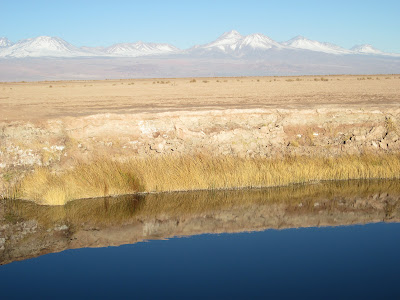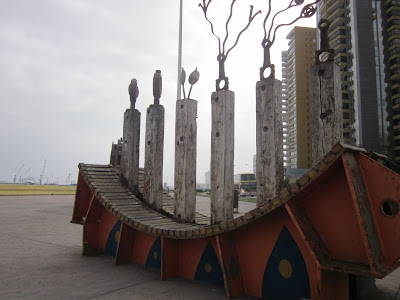After giving a talk at the Univsersity of Antofagasta, we decided to make the most of our time up north and visit the San Pedro de Atacama Desert, about 4.5 hours inland. Filled with tourists, shopping, and lots of good restaurants- the area reminded me a lot of Patagonia in the South when I visited to go backpacking in Torres del Paine.
Popular sites and activities include visits to hot springs, geysers, horseback riding, salt lagoons, archeological tours, and hikes out to gorgeous look-out point such as Valle de La Luna, Valle de la Muerte, y Valle del Arcoiris.
Although most locals were complaining about the colder weather since it is Winter, I personally loved it- in comparison with the wet and cold climate in Temuco, San Pedro de Atacama was very warm and I enjoyed getting the chance to walk around in short sleeves again!
Volcanoes on the Horizon
the view from our hostel




One striking feature of San Pedro de Atacama was the layout of the city- as reflected above, the majority of streets are walled-in by stores, hostels, and restaurants alike.
Sights around the Central Plaza


Valle de La Luna
Named for it's similar appearance to the moon's surface, this famous destination is run and protected by the Asociación Indígina (Indigenous Association) and located about 19 km outside of town. It features a variety of gorgeous dunes, caves, salt mines, and panoramic views.






Salty Rocks!
large salt deposits can be found quite easily while walking around areas like Valle de la Luna

Las Tres Marías

















































